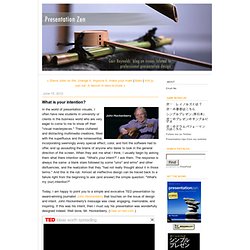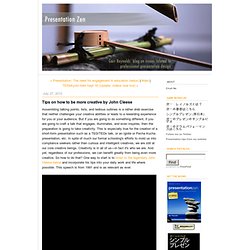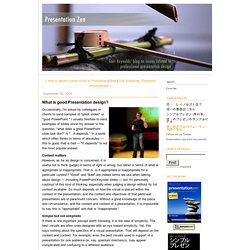

Monroe's Motivated Sequence - Presentation Skills Training from MindTools. Perfecting the Call to Act Be inspiring!

© iStockphoto Is persuasion a gift? Are some people born with the ability to speak well and "sell" their ideas successfully? It sure seems that way when you're wowed by a motivational speaker, or galvanized into action by a thought-provoking presentation. In your role, do you ever need to motivate, inspire, or persuade others? Whether you're a senior executive giving a presentation to the Board, a manager giving a morale-boosting speech to your team, or a production manager giving a presentation on safety standards, at some point, you'll probably have to move people to action.
While there are certainly those who seem to inspire and deliver memorable speeches effortlessly, the rest of us can learn how to give effective presentations too. Monroe's Motivated Sequence: The Five Steps Alan H. This is a well-used and time-proven method to organize presentations for maximum impact. Step One: Get Attention Get the attention of your audience. Note: Key Points. PresentationZen by on Prezi. Where to get quotations for presentations? In my presentations, I may have several slides which feature a quote from a famous (sometimes not so famous) individual in the field.

The quote may be a springboard into the topic or serve as support or reinforcement for the particular point I'm making. A typical Tom Peters presentation at one of his seminars, for example, may include dozens of slides with quotes. "I say that my conclusions are much more credible when I back them up with great sources," Tom says in this post from May, 2005. (I talked about using quotes a few months back here with examples.) Like everything else, quotations work best when not over done. Presentation: The need for engagement in education (redux) Below is a ustream version of a short talk I did in the spring at TEDxOsaka. This repeats a lot of the stuff I (and many others) am always hammering on regarding school and the lecture approach to teaching.
What's the use of lectures? I mention Dr. Bligh's book in my presentation; I recommend the book. Bligh shares his vast experience as a college professor and supports his ideas and suggestions with good evidence. Related links• Lecture Fail (Chronicle of Higher Education)• Article: 60% find lectures boring (only 60%?) Digg this • Add to del.icio.us. Ken Burns on the power of story. What is your intention? In the world of presentation visuals, I often have new students in university or clients in the business world who are very eager to come to me to show off their "visual masterpieces.

" These cluttered and distracting multimedia creations, filled with the superfluous and the nonessential, incorporating seemingly every special effect, color, and font the software had to offer, end up assaulting the brains of anyone who dares to look in the general direction of the screen. When they ask me what I think, I usually begin by asking them what there intention was. "What's your intent? " I ask them. The response is always the same: a blank stare followed by some "ums" and erms" and other disfluencies, and the realization that they "had not really thought about it in those terms. " Today, I am happy to point you to a simple and evocative TED presentation by award-winning journalist John Hockenberry that touches on the issue of design and intent. Tips on how to be more creative by John Cleese.
Assembling talking points, lists, and tedious outlines is a rather drab exercise that neither challenges your creative abilities or leads to a rewarding experience for you or your audience.

But if you are going to do something different, if you are going to craft a talk that engages, illuminates, and even inspires, then the preparation is going to take creativity. This is especially true for the creation of a short-form presentation such as a TED/TEDx talk, or an Ignite or Pecha Kucha presentation, etc. In spite of much our formal schooling's efforts to mold us into compliance seekers rather than curious and intelligent creatives, we are still at our core creative beings. Creativity is in all of us—in fact it's who we are. And yet, regardless of our professions, we can benefit greatly from being even more creative. Presentation Zen Photos. Where can you find good images? Stock Photography: Search Royalty Free Images & Photos. iStock now has 20,730,000 royalty-free stock files.Browse recent.

Search for photos, illustrations, video & audio Welcome Presentation Zen Readers iStockphoto is the world’s leading provider of royalty-free stock media and design elements. We have millions of affordable and safe stock photos, illustrations, video footage, audio tracks and Flash media. Choose 10 Free Images & 20% Discount. Presentation Zen Video by Garr Reynolds. Presentation Zen. What is good PowerPoint design? Occasionally, I'm asked by colleagues or clients to send samples of "great slides" or "good PowerPoint.

" I usually hesitate to send examples of slides since my answer to the question, "what does a great PowerPoint slide look like? " is "...it depends. " In a world which often thinks in terms of absolutes — this is good, that is bad — "it depends" is not the most popular answer. Context mattersHowever, as far as design is concerned, it is useful not to think (judge) in terms of right or wrong, but rather in terms of what is appropriate or inappropriate. That is, is it appropriate or inappropriate for a particular context? Simple but not simplisticIf there is one important precept worth following, it is the idea of simplicity.
Simplicity is often used as a means to greater clarity. (Click for larger view of this slide) "No one can define them or draw up a system around them. BEFORE. The slide on the right (above) was an effort to display the same information in a pie chart. Before After. Presentation Zen: Simple Ideas on Presentation Design and Delivery: Garr Reynolds: 9780321525659: Amazon.com.